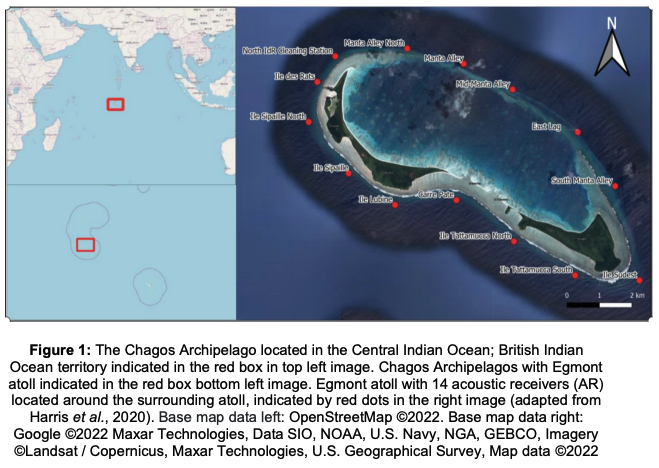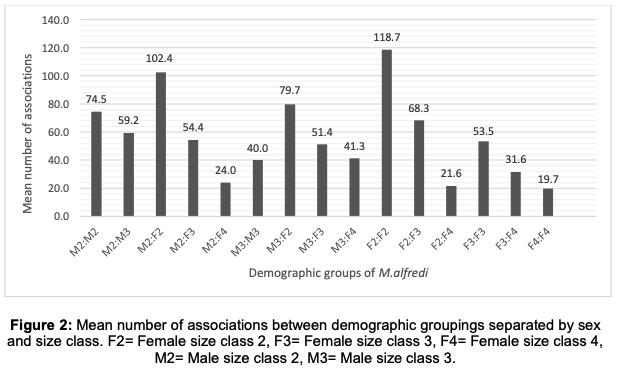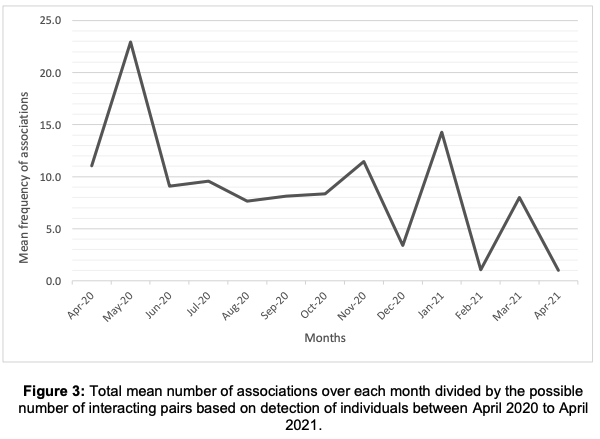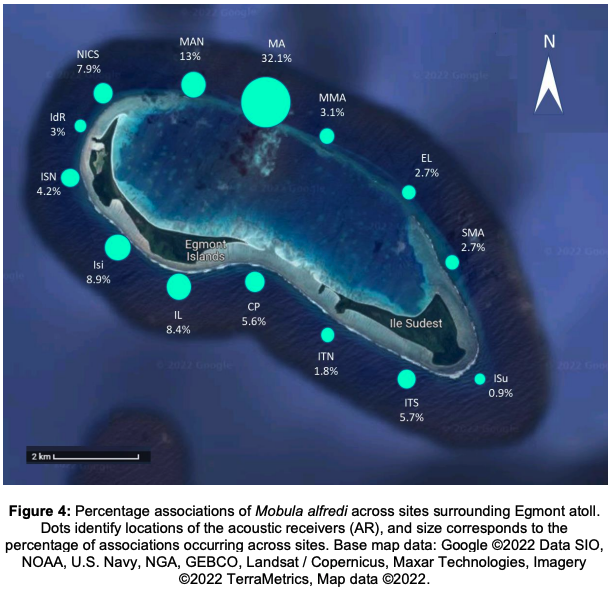Analysing association rates of reef manta rays (Mobula alfredi) situated in Chagos Archipelago
2022
Lena Pollet (B.Sc. Marine Biology and Coastal Ecology - University of Plymouth)
Keywords: Acoustic Telemetry • Mobula alfredi • Aggregation Behaviour • Association Rates • Site Function




Summary: Reef manta rays (Mobula alfredi) numbers are declining due to multiple anthropogenic pressures. Understanding their movement patterns and group behaviour is crucial for conservation. A study using acoustic telemetry in the Chagos Archipelagos found a sparse network with no significant social behaviour among 26 manta rays. Site fidelity to a feeding area was observed, indicating that associations are driven by resource availability rather than social aspects. Future research should focus on cleaning stations and the impact of human activity on manta ray behaviour.
Abstract
“Reef manta rays (Mobula alfredi) are in rapid decline and threatened by multiple anthropogenic pressures. Conservation of this vulnerable marine species requires an understanding of the drivers of their movement patterns and group structuring. Aggregations have been presumed to be a function of resource availability. However, recent studies have suggested that association rates within these areas of aggregation may underpin social behaviour, furthering our understanding of these species' movement and social networking. Here we used acoustic telemetry technology to assess the extent that a group of 26 M. alfredi associates within Egmont Atoll, situated within the Chagos Archipelagos, over a one year period. Social analysis was conducted on this population by assessing dyadic association rates to isolate if these associations were preferred or randomly non-social. A complete but sparse network was found with a high number of detection and dyadic associations observed. However, association rates were not significant, demonstrating a lack of social behaviour and preference between individuals. Furthermore, there was strong site fidelity for Manta Alley, identified primarily as a feeding area, at which the majority of detections and associations (32.1%) were recorded. This suggests that these associations are driven predominantly by site function, such as feeding or individual behaviour in relation to a resource rather than social aspects. Therefore, further research into association rates should focus predominately on cleaning stations and consider how anthropogenic pressures may influence M. alfredi social behaviour.”
Author Affiliations
University of Plymouth
The Manta Trust
